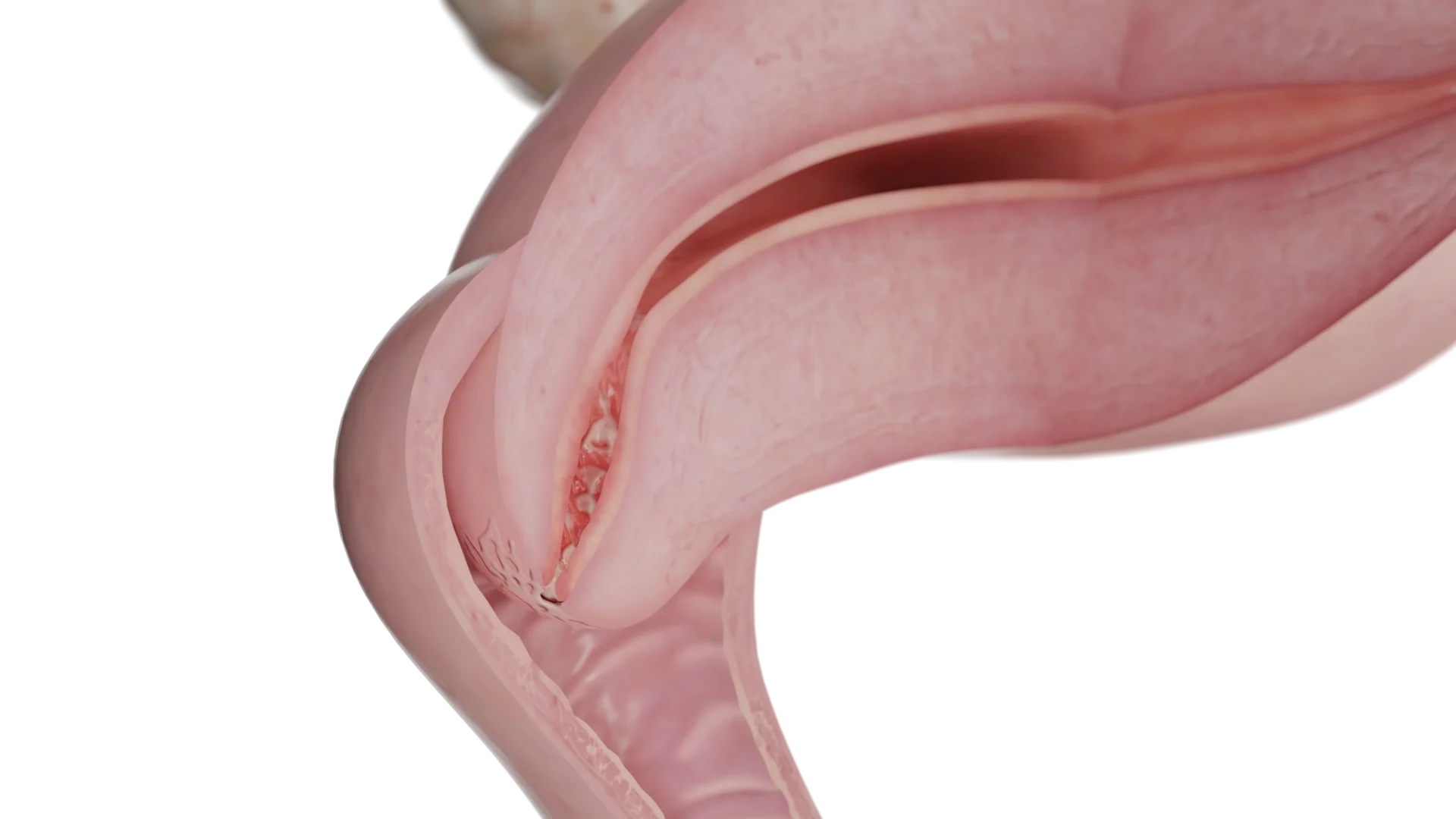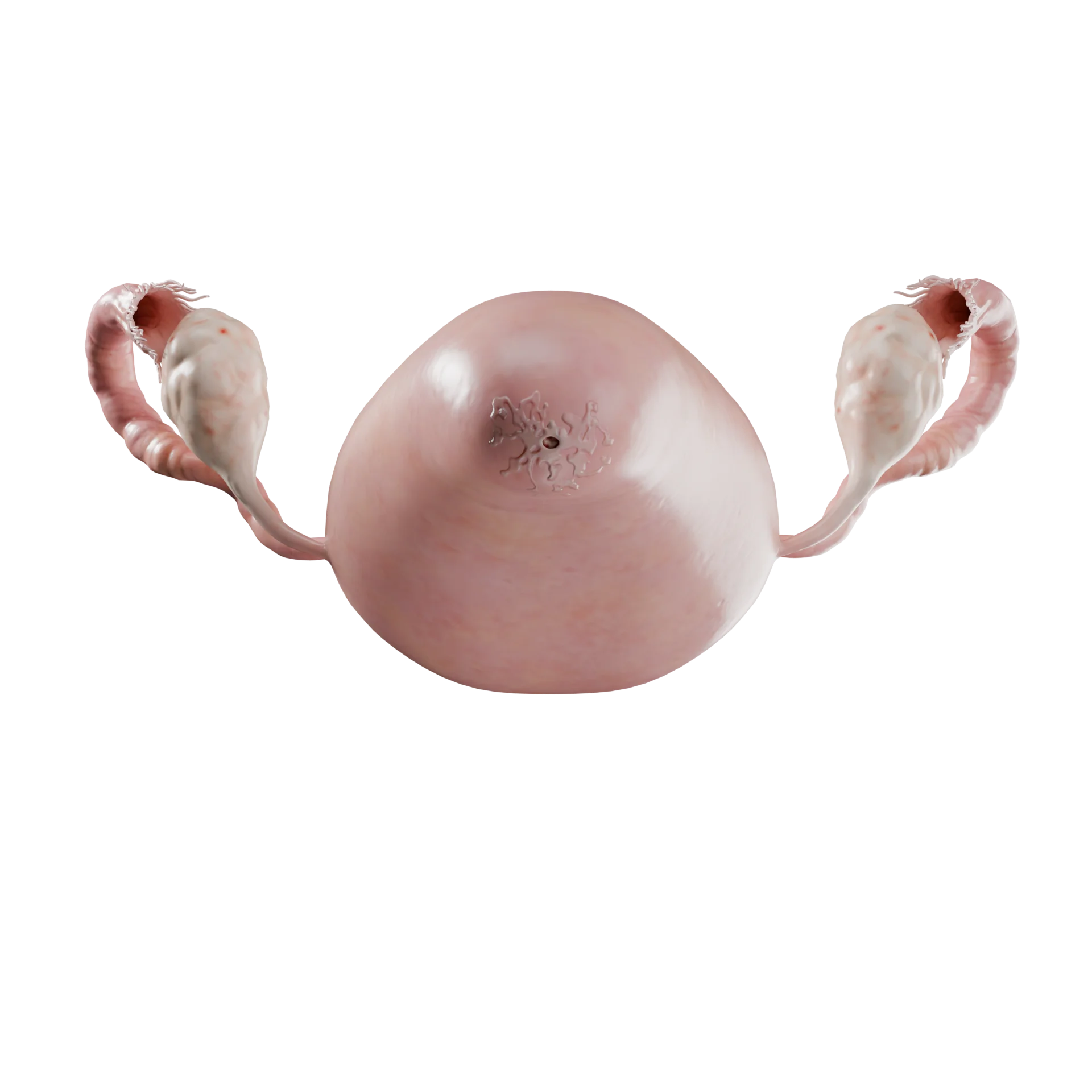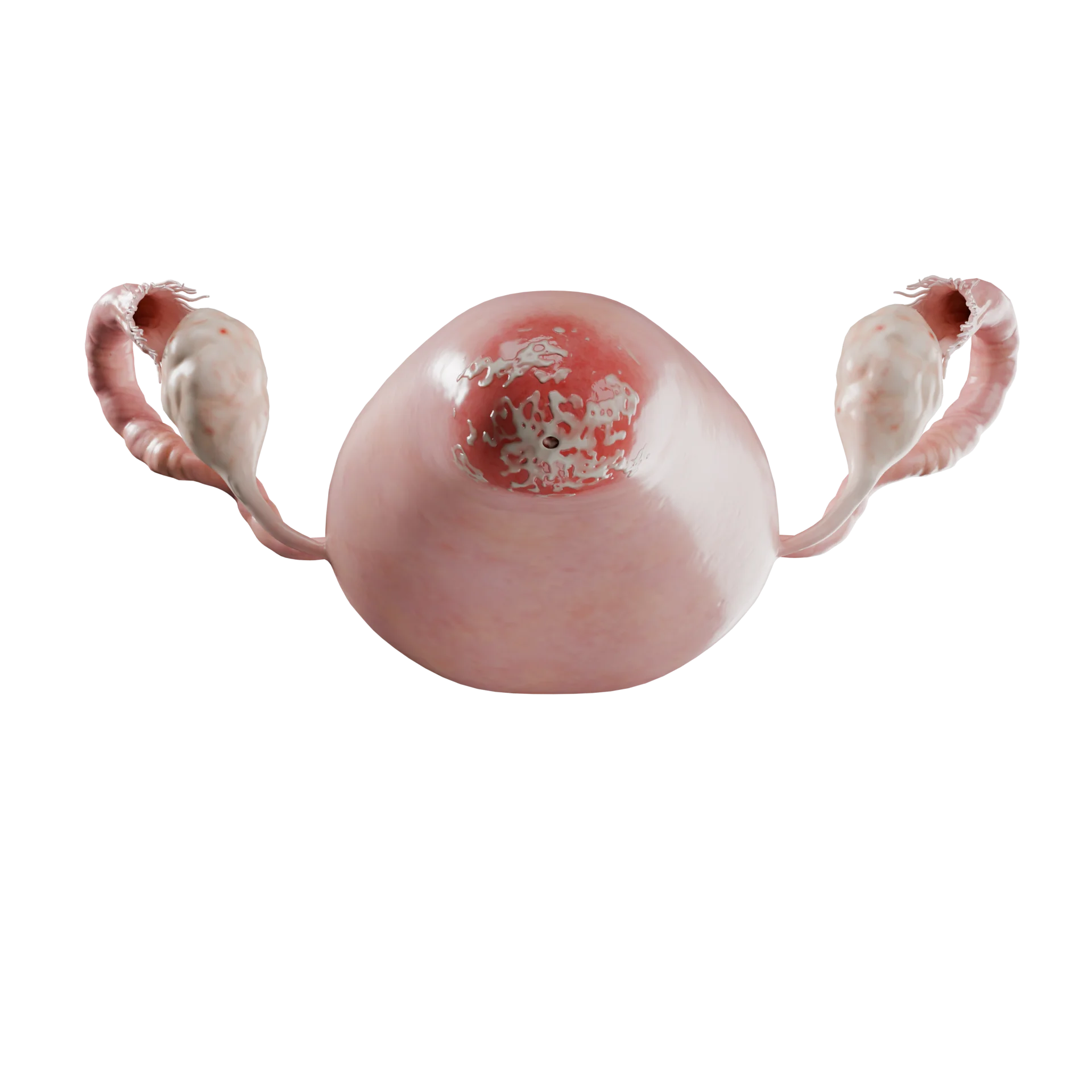Vulvitis: Factors of Development, Clinical Manifestations, Diagnosis, Treatment
Vulvitis - inflammation of the vulva, manifested by lesions of the labia, clitoris, pubis and vaginal vestibule. Clinical manifestations, diagnosis and treatment.
Cervicitis is a clinical syndrome characterized by inflammation of the cervical epithelium.
Acute or chronic forms are distinguished, with acute cervicitis having infectious causes, while chronic is caused predominantly by non-infectious sources.

The exact prevalence of cervicitis is difficult to determine due to the lack of standardized diagnostic criteria. Since sexual activity is a major risk factor for infectious diseases, the highest incidence is found in sexually active women between the ages of 15 and 24.
According to etiology, cervicitis can be divided into infectious and non-infectious.
Infectious agents include:
Neisseria gonorrhoea and Chlamydia trachomatis predominantly infect the prismatic epithelium of the endocervix, whereas HPV and trichomonads infect the squamous epithelium of the ectocervix. Bacterial vaginosis is also associated with cervicitis.
Non-infectious causes of cervicitis include:
It is worth noting that in most cases the exact etiology cannot be established. It is clinically impossible to distinguish inflammation caused by mechanical or chemical stimuli from inflammation caused by infectious etiology.

Patients present with nonspecific complaints, including purulent or purulent mucous discharge from the vagina and intermenstrual or postcoital bleeding. Patients may also present with dyspareunia or pulling pains in the lower abdomen.
History taking plays an important role in identifying risk factors. All women, regardless of symptoms, who come for a check-up should be asked about their sexual history in detail, using five key points:

The classic signs are yellow or mucous discharge from the pharynx and slight contact bleeding from the endocervix when touched with a cotton applicator. There may also be hyperemia of the mucosa.
In addition, visible pinpoint hemorrhages on the exocervix (so-called strawberry cervix) indicate trichomonad infection, and vesicles and ulcers indicate HPV infection. Many women are asymptomatic with mycoplasma cervicitis, so this infection is often missed.
Internal genital lesions should be suspected in the case of:
The initial investigation is aimed at identifying the causative agent. The most sensitive and specific test is the nucleic acid amplification test (NAAT). This NAAT test can be performed on samples of endocervical and vaginal secretions as well as urine.
The criteria for using an elevated leukocyte count in Gram staining of endocervical material for the diagnosis of cervicitis have not been standardized. This method has low sensitivity and low positive predictive value.
Methods of diagnosing cervicitis
| Sample | Test | Conclusion |
|---|---|---|
| Endocervical swab | Chlamydia and gonorrhea NAAT | Positive – confirmed Chlamydia trachomatis and Neisseria gonorrhoeae. Negative – cervicitis of other cause. |
| Smear microscopy, request a culture for Neisseria gonorrhoeae | Sensitivity and possible resistance of Neisseria gonorrhoeae | |
| Mycoplasma genitalium NAAT | Positive – further antibiotic sensitivity testing is required | |
| NAAT for HPV (in cases of untreated or recurrent cervicitis in the absence of other causes) | Positive – antiviral therapy | |
| Vaginal swab | Trichomonas NAAT | Positive result – confirmation of diagnosis, treatment required |
| Vaginal pH | Normal 3.5-4.5 | > 4.5 indicates an abnormal vaginal flora |
| Anal/ rectal swabs | Chlamydia trachomatis and Neisseria gonorrhoeae NAAT | Positive – confirmed Chlamydia trachomatis and Neisseria gonorrhoeae. Negative – in the presence of a history of anal intercourse may be the cause of recurrent bacterial vaginosis. |
| Microscopy and culture for Neisseria gonorrhoeae | Sensitivity to Neisseria gonorrhoeae and possible resistance profile |
Treatment tactics depend on the etiology of cervicitis and may vary depending on the cause of the disease.
According to CDC guidelines, empiric treatment is recommended for women at increased risk for sexually transmitted infections: girls younger than 25 years of age, women with a new sexual partner, a partner with a previously established sexually transmitted infection, and those who have multiple sexual partners at the same time.Such patients are prescribed antibiotic therapy for chlamydia and gonorrhea.
Empirical treatment is also recommended for women in whom testing fails to detect the causative agent. Treatment may be deferred until confirmatory test results are available in women at lower risk of sexually transmitted infections.
There are the following drugs for empiric therapy:
For severe penicillin/cephalosporin allergies, it is recommended:
If infectious agents are detected by laboratory tests, treatment is as follows:
Contact tracing is the first priority for chlamydia, gonorrhea, trichomoniasis and M. genitalium and should be performed in all patients with confirmed infection. Contact tracing for herpes simplex virus is not recommended. Sexual activity should be discontinued until completion of the therapeutic regimen. HIV-positive women with cervicitis receive the same treatment as HIV-negative women.
Timely treatment in these women reduces viral shedding and may reduce the risk of HIV transmission.
The term “chronic cervicitis” is used for women with persistent discharge persisting for three months despite exclusion of infection and empirical antibiotic therapy. Patients should be re-examined for possible re-exposure to an infectious agent. In the absence of infection, there is no evidence for the efficacy of repeated or prolonged antimicrobial therapy for persistent symptomatic cervicitis.
The spread of infection to the uterus, fallopian tubes and ovaries with the development of pelvic inflammatory disease (PID) is a dangerous complication of cervicitis. PID can lead to both an acute condition and have chronic consequences, including chronic pelvic pain, ectopic pregnancy and infertility.
The presence of cervicitis associated with sexually transmitted infections correlates with unfavorable pregnancy outcomes, especially premature rupture of the fetal membranes, premature delivery, and birth of low birth weight babies for gestational age. Untimely diagnosed chlamydial infection during pregnancy leads to perinatal exposure of the child to an infected maternal cervix. Primary neonatal C. trachomatis infection affects the mucous membranes of the eyes, oropharynx, urogenital tract and rectum.
The most severe manifestations of infection with N. gonorrhoeae infection in neonates are neonatal conjunctivitis and sepsis, which may include arthritis and meningitis. Less severe manifestations are rhinitis, vaginitis, urethritis and scalp infection.
Pregnant women, regardless of gestational age, should undergo mandatory prenatal infection screening and, if infection is detected, recommended treatment.
1. What is cervicitis and what are its main causes?
2. What is chronic cervicitis?
3. Can cervicitis lead to cancer?
4. How is cervicitis transmitted?
5. Is cervicitis dangerous in pregnancy?
6. Can I get pregnant with cervicitis?
7. Is cervicitis transmitted to men?
8. What are the dangers of cervicitis?
List of Sources
1.
VOKA Catalog.
https://catalog.voka.io/2.
Workowski, K. A., Bachmann, L. H., & Chan, P. A. *Sexually Transmitted Infections Treatment Guidelines, 2023*. MMWR Recommendations and Reports, **72**(4), 1–187. [CDC].
3.
WHO Guidelines for the Treatment of *Chlamydia trachomatis*, *Neisseria gonorrhoeae*, and *Trichomonas vaginalis* (2021).
4.
European Guideline on the Management of Cervicitis (IUSTI/WHO, 2022).
5.
Amsel, R., et al. *”Microbiome Analysis in Women with Chronic Cervicitis: Implications for Diagnosis and Therapy”*. Journal of Infectious Diseases, **229**(3), 345–356.
6.
Taylor, S. N., et al. *”Point-of-Care Testing for Non-viral Sexually Transmitted Infections in Cervicitis”*. Clinical Infectious Diseases, **77**(5), e45–e52.
7.
Haggerty, C. L., et al. *”Persistent and Recurrent Cervicitis: Risk Factors and Management”*. American Journal of Obstetrics and Gynecology, **226**(4), 501.e1–501.e12.
8.
Van Der Pol, B., et al. *”Molecular Diagnostics for Cervicitis: Utility of Multiplex PCR in Detecting Co-Infections”*. Sexually Transmitted Infections, **97**(6), 412–418.
9.
Mitchell, C., & Marrazzo, J. *”Bacterial Vaginosis and the Risk of Cervicitis: A Longitudinal Analysis”*. Obstetrics & Gynecology, **135**(4), 862–870.
10.
Gaydos, C. A., & Hardick, J. *”Advances in Rapid Nucleic Acid Amplification Tests for Cervicitis Pathogens”*. Expert Review of Molecular Diagnostics, **23**(7), 567–578.
11.
Ravel, J., et al. *”Vaginal and Cervical Microbiome Signatures in Women with Cervicitis”*. Nature Communications, **13**(1), 3521.
12.
Schwebke, J. R., & Muzny, C. A. *”The Role of Mycoplasma genitalium in Cervicitis”*. Clinical Microbiology Reviews, **34**(3), e00118-20.
13.
Unemo, M., et al. *”Emerging Antimicrobial Resistance in Neisseria gonorrhoeae: Implications for Cervicitis Therapy”*. The Lancet Infectious Diseases, **24**(2), e78–e89.
14.
Kissinger, P., et al. *”Single-Dose vs. Multidose Therapy for Trichomonas vaginalis-Associated Cervicitis”*. New England Journal of Medicine, **388**(12), 1123–1132.
15.
Kong, F. Y. S., et al. *”Azithromycin Resistance in Chlamydia trachomatis: A Global Review”*. Clinical Infectious Diseases, **74**(8), 1424–1430.
Link successfully copied to clipboard
Thank you!
Your message is sent!
Our experts will contact you shortly. If you have any additional questions, please contact us at info@voka.io